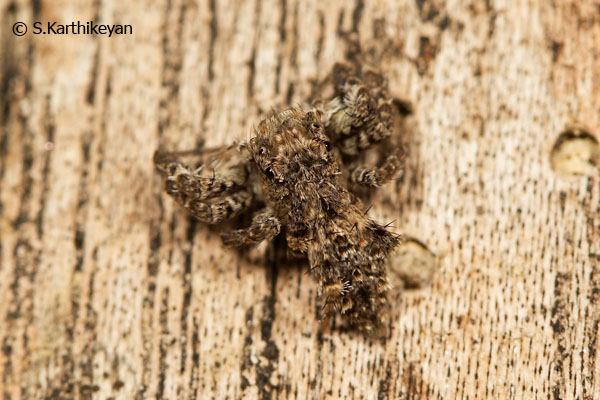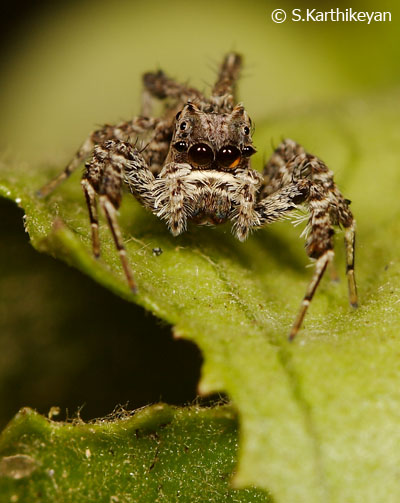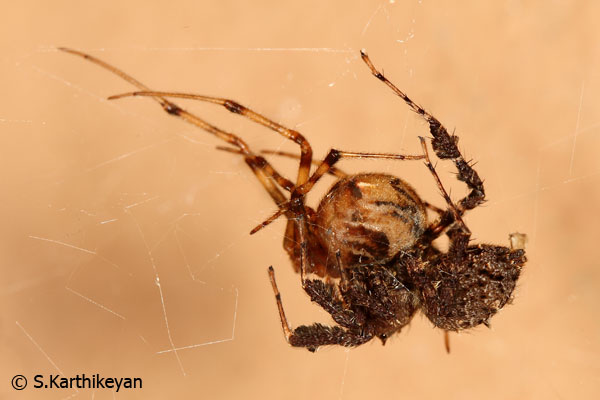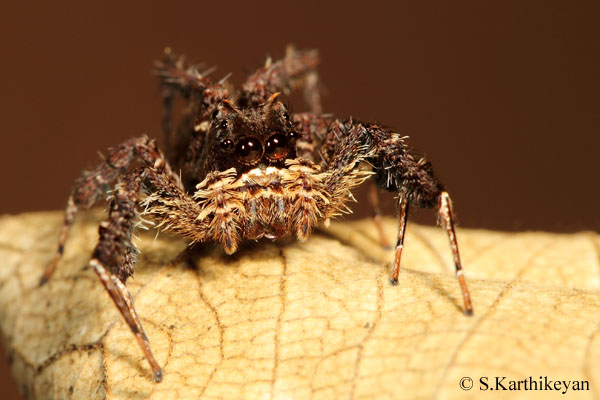The name Portia instantly transports many of us to the canals of Venice; it however takes me back to the northeastern part of India where i had a chance encounter with Portia herself! Just as her wit, intelligence and superiority command attention, so do the exploits of our own Portia! I had heard the name several times from friends who were well versed with spiders; its resemblance to a piece of debris making it virtually invisible to its predators and its prey is just one of them. This very character makes it very difficult for a human eye to locate one of these spiders.
I saw my first Portia in a remote part of Assam. I had entered a small temple to take shelter from the heavy drizzle. While there, I was searching for possible subjects in the hedge. I located a small jumping spider with a golden gloss which I managed to photograph. I continued my scouting when I saw a piece of bark move as my hand approached it. I initially thought it was one of the bag worms. But on closer observation I knew I had just stumbled upon something very interesting and was also about to get the picture of the trip! It was the little jumping spider belonging to the genus Portia (Fam : Salticidae). I got a record shot at first sight and then many more as it actively moved about.

Subsequently, I have seen the spider a couple of times at Kabini River Lodge and once in B.R.Hills. Each time I have seen the Portia, I have wondered at the number of times I may have missed noticing it!

However, it was very recently that I had the opportunity to witness the feeding habit of the spider. I was at the Dubare Elephant Camp exploring the camp premises with my colleague. I happened to spot a piece of “debris” on a web in the angle of the outside wall of one of the cottages. The spider, the owner of the web, was also seen. From a distance, it seemed as if the “debris” was the piece of leaf. I have seen umpteen number of times, the comb-footed spiders (Fam: Theridiidae) often incorporating a piece of dry leaf which serves as a retreat. Nevertheless, I went closer for an inspection. At close quarters it seemed like a prey that was trapped in the web, the owner making a meal of it. Only when I carefully examined things did I realise that the piece of “debris” was indeed a Portia – the tables had been turned. It was the piece of “debris” that was having a stranglehold of the owner!

Though Portia feeds on insects, the primary food consists of other spiders. This food source is not the easiest to tackle. Other spiders- potential food of Portia– are also hunters in their own right with predatory abilities. Given the situation, it requires superior capabilities to make a meal of other potential predators. And, Portia has all the faculties to survive on a meal of spiders.
Portia employs different strategies to tackle different spiders. They may take the opponent head-on, or may drop down into the web to take the opponent by surprise. They are even known to invade webs of spiders when there is a gentle breeze to minimize detection by owner. Once on the web, they make vibrations that resemble those of a struggling insect caught in the web. Portia makes a meal of the web owner when it comes out to wrap up and make a meal of the apparently ‘trapped prey’! It not only invades the webs of other spiders and makes a meal of them, but also eats up their eggs!

All these capabilities make the Portia a very smart and thinking predator. Whoever said that using varied strategies is only in the realm of more evolved animals?